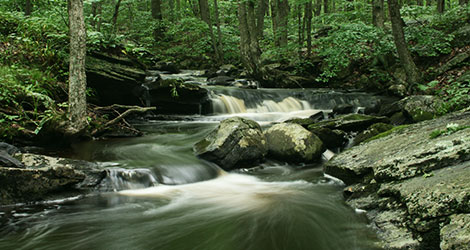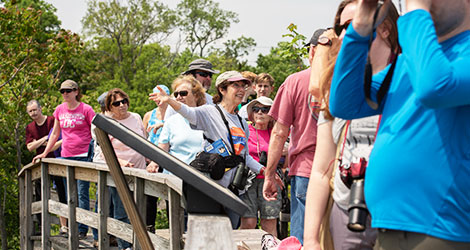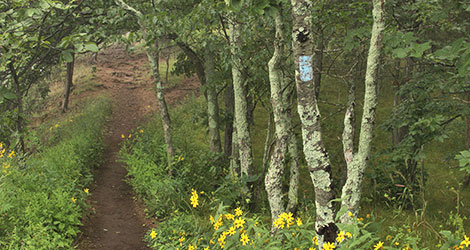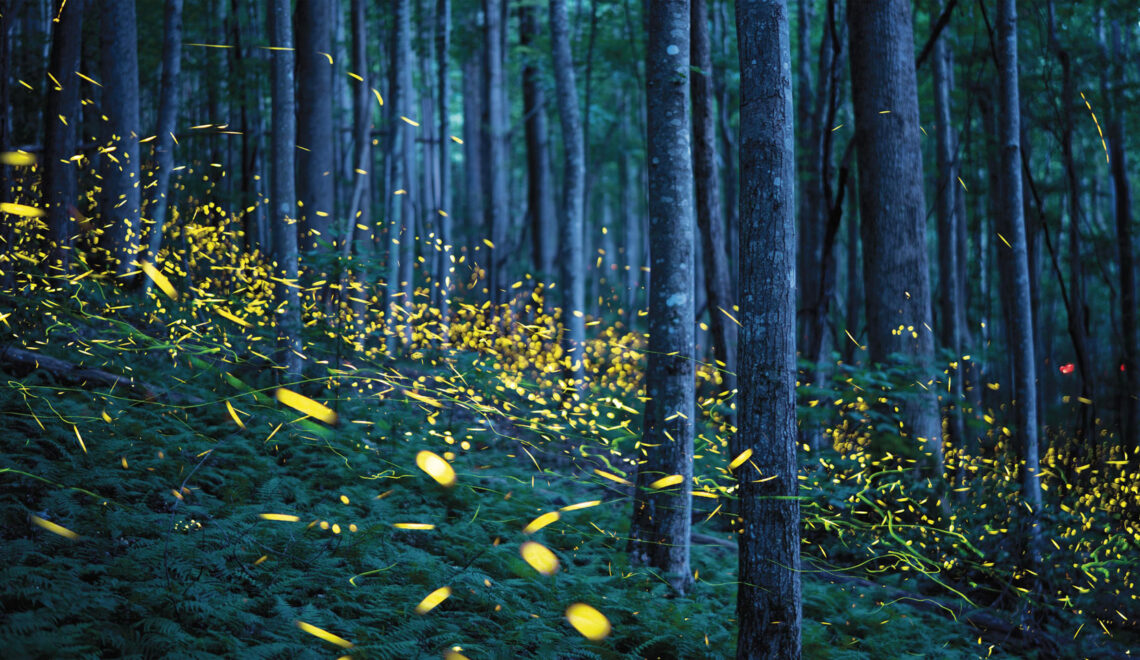
Delightful Lights
One summer night more than a century ago, a Scottish writer was strolling on a lakeside path and saw tiny twinkling lights. Enchanted, he named one of them Tinkerbell. Thanks to J.M. Barrie, I always think of fairies when I see the silent display of fireflies.
By Laurie D. Morrissey
Photos by Radim Schreiber | Fireflyexperience.org
Humans have always been intrigued by these luminous insects. It’s easy to think them magical, since they don’t seem to exist until dusk. Even then, they are fairly elusive—unlike mosquitoes, which emit an annoying buzz and like to suck your blood. Whether you call them fireflies or lightning bugs, they are fascinating creatures.
Despite the name, fireflies are not flies. They’re winged beetles classified under Lampyrida, a family of insects within the beetle order Coleoptera. There are about 2,000 firefly species worldwide, as many as 150 in North America.

Above: Synchronous fireflies (Photinus carolinus) are on of only a couple of North American species who synchronize their flashing light patterns as seen in this long exposure image. Photo by Radim Schreiber
Photinus pyralis, known as the eastern firefly, is believed to be the most common species of all, and it is the one we are most likely to encounter in Connecticut. In peak firefly season—mid-June through mid-July—they are most noticeable at twilight and in early evening, with their yellow-green lights blinking close to the ground in meadows and forest edges. The eastern firefly is about a half inch long, with yellow margins along its black wing covers and a black dot in the center of its pinkish-yellow head shield. Another common name is big dipper firefly, due to the characteristic flight of the male. While females rest on the tips of reeds and grasses, males swoop through the air in a J shape, lighting on the upswing to signal their availability as mates.
Because it is so common, more is known about P. pyralis than any other firefly in the world. Sara Lewis, a Tufts University evolutionary ecologist who grew up in Woodbridge, Conn., is one of the world’s experts, having published hundreds of research papers and the book Silent Sparks: The Wondrous World of Fireflies. She also presented a TED talk, “The Loves and Lives of Fireflies,” that has more than a million views.
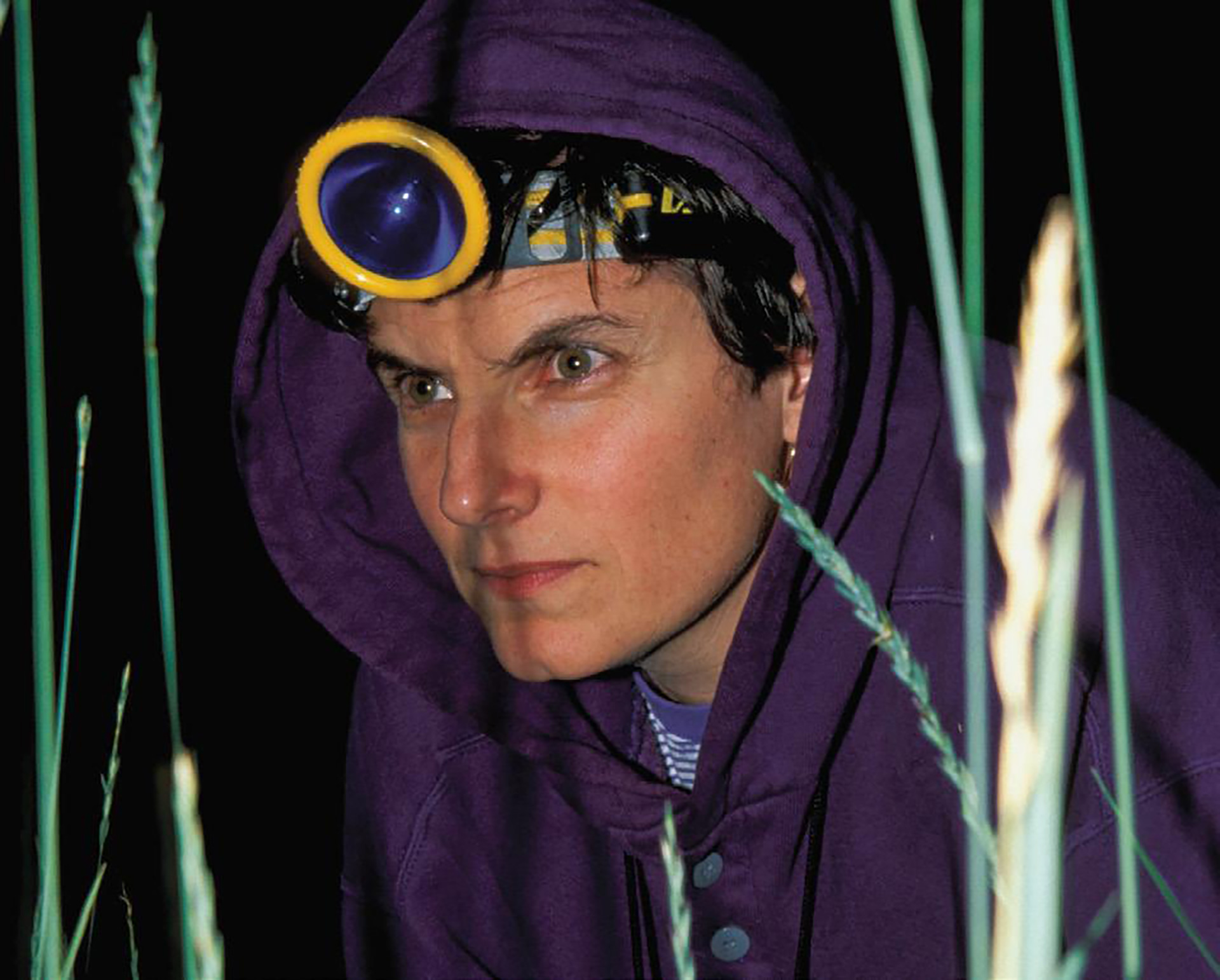
Sara Lewis in the field. Photo by Dan Perlman.
“Beneath their gentle façade, fireflies’ lives are surprisingly dramatic,” says the self-professed firefly junkie. “They’re full of spurned advances, expensive nuptial gifts, chemical weapons, elaborate subterfuge, and death by exsanguination!” (That’s a fancy word for blood loss. Some females prey on males of a different genus, ingesting their blood to steal some of their defensive steroids for themselves.)
Fireflies spend their early life underground feasting on earthworms, snails, and soft-bodied insects, many of which are several times their size. Eastern fireflies spend one to three years in this larval stage. They then spend about two weeks as pupae before moving on to adulthood. Their adult life is brief—just a few weeks—but for most of us, this is the stage in which we recognize them. This is when they begin what Lewis calls their courtship conversation: precisely controlled flashes used to locate mates.
Fireflies are, she says, a beautiful example of “the creative improvisation of evolution.” When a firefly flashes, it is transforming chemical energy into light. This bioluminescence likely evolved to serve as a warning to potential predators, saying “I don’t taste good!” Over millions of years, these lights evolved into a communication tool powered by a chemical reaction between luciferase (an enzyme) and luciferins (molecules that produce light). The process occurs in special organs in the firefly’s abdomen.
When a female firefly sees a flash she likes, she aims her lantern in the direction of her potential mate and responds with flashes of her own. The mating pair spends all night together, Lewis explains, while the male delivers not only sperm but also a nutrient-filled package called a “nuptial gift” that is essential to provisioning the eggs. Over many summers of research, Lewis and her colleagues determined that longer flashes are associated with larger nuptial gifts, and thus superior nutrition for eggs. Females make their mate selections accordingly.
Different species have different flash patterns, and some do not flash at all. One of the first insects to appear in spring is Ellychnia corrusca, known as the winter dark firefly or diurnal firefly. When the days start to lengthen and daytime temperatures rise, you may see this beetle slowly moving about in ridges and fissures in the bark of a tree or clustering around sap flows. A set of orange parentheses on its head is an identifying mark. As the weather warms, these fireflies fly slowly along in the understory, largely unnoticed. The only time they come close to living up to their name is during their larval stage, which they spend underground eating, growing, and (faintly) glowing.
In some firefly species, the males synchronize their flashes. Viewing the synchronized firefly display of Photinus carolinus in Great Smoky Mountains National Park is so popular that passes are obtained through a lottery.
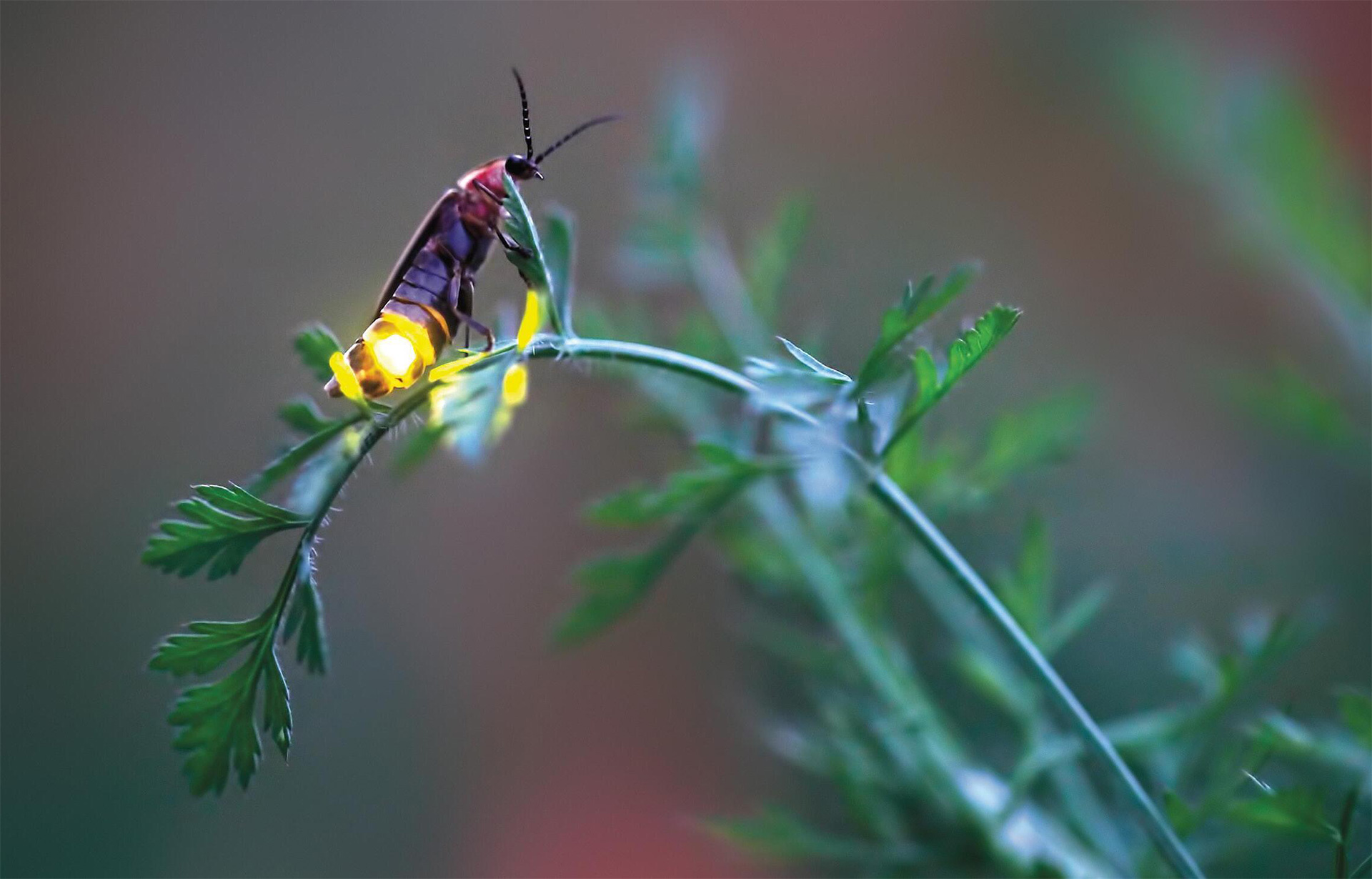
Photo by Radim Schreiber.
“Beneath their gentle façade, fireflies’ lives are surprisingly dramatic. They’re full of spurned advances, expensive nuptial gifts, chemical weapons, elaborate subterfuge, and death by exsanguination!”
Sara Lewis
Andy Moiseff, a professor of physiology and neurobiology at the University of Connecticut, studies how the brain and nervous system control an animal’s behavior. “Watching fireflies is itself just a calming activity, but as a scientist I look beyond the beauty and uniqueness of the flashes,” he says. “For me, they provide insight into how an animal, in this case a flying insect, can evolve mechanisms that allow it to perform complex behaviors that allow the individuals and the species to survive. In the firefly, this all happens in a brain that is only 1-2 mm in size. It’s quite amazing when you think about it.”
One of Moiseff’s areas of research is the effect of light pollution on fireflies. Fireflies are in decline, and scientists attribute this partly to the overuse of night-time lights, which interfere with the fireflies’ courtship activities. Habitat destruction and pesticide use are also likely culprits.
There are plenty of places to watch the firefly display, but one notable spot is the Marvin, Massarella, and Friends Firefly Sanctuary (newcanaanlandtrust.org/firefly) in New Canaan. According to New Canaan Land Trust staff member Elle Smith, more than 500 people visit during peak season.
“People are absolutely astounded by the beauty of the fireflies,” she says. “The staff and board of the Land Trust are still in awe of this phenomenon even after years with the organization. It’s one of the most anticipated summer events in town, and our registration frequently sells out within a day.”
There are a few things firefly fans can do to ensure that this summer light show is never extinguished. Experts recommend turning off outdoor lights, leaving unmown areas, and avoiding the use of pesticides and chemical fertilizers. When watching fireflies, avoid using a headlamp or flashlight. If you need a flashlight while walking, cover the lens with blue cellophane since fireflies’ eyes are less sensitive to blue light. Catching them in a jar is not harmful if they are released within a couple of hours. Ways to help fireflies recover are detailed in Sara Lewis’ book, and on the website firefly.org
Scientists are still learning about the complex lives of fireflies, and believe that many species are yet unknown. With more public awareness and with protections in place, maybe those of us who have fond memories of firefly watching as children will enjoy the same spectacle with our grandchildren.
Laurie D. Morrissey is a New Hampshire-based writer of articles, essays, and poetry. Her work has appeared in Connecticut Woodlands since 2016, when she wrote about her father, state park ranger Bill Dougal. Her writing has appeared in Northern Woodlands, Art New England, New Hampshire Home, Appalachia, and numerous poetry journals.

